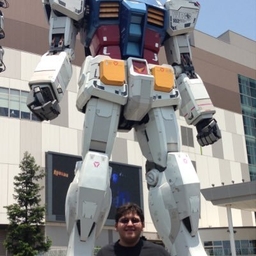
Andrew Wagner
Science Writer at NASA Spinoff
Science Writer at @NASASpinoff, Formerly @GovMattersTV @NewsfromScience & @NewsHour
Articles
-
2 weeks ago |
nasa.gov | Andrew Wagner
Consisting of 99% air, aerogel is the world’s lightest solid. This unique material has found purpose in several forms — from NASA missions to high fashion. Driven by the desire to create a 3D cloud, Greek artist Ioannis Michaloudis learned to use aerogel as an artistic medium. His journey spanning more than 25 years took him to the Massachusetts Institute of Technology (MIT) in Cambridge; Shivaji University in Maharashtra, India; and NASA’s Jet Propulsion Laboratory in Southern California.
-
1 month ago |
nasa.gov | Andrew Wagner
The antigravity treadmill, which has benefits in space and on Earth, was pioneered by Robert Whalen at NASA’s Ames Research Center in Silicon Valley, California, in the 1980s and ’90s. Whalen built a system that placed a pressurized bulb over the user’s upper body, creating downward pressure that could simulate gravity for astronauts running on a treadmill in space.
-
2 months ago |
nasa.gov | Andrew Wagner
Artificial intelligence (AI) is advancing rapidly, as intelligent software proves capable of various tasks. The technology usually requires a “human in the loop” to train it and ensure accuracy. But long before the arrival of today’s generative artificial intelligence, a different kind of AI was born with the help of NASA’s Ames Research Center in California’s Silicon Valley — one that only exists between machines, running without any human intervention.
-
2 months ago |
nasa.gov | Andrew Wagner
Battery technology that has powered the International Space Station, the Hubble Space Telescope, and numerous satellites is now storing energy on Earth, enabling intermittent renewable energy sources to provide steady power. These extremely durable batteries were made more affordable for the average consumer by California-based EnerVenue Inc., which was able to bring down the cost of the technology by removing the need for expensive platinum, making terrestrial applications more feasible.
-
2 months ago |
nasa.gov | Andrew Wagner
Even before we’re aware of heart trouble or related health issues, our bodies give off warning signs in the form of vibrations. Technology to detect these signals has ranged from electrodes and patches to watches. Now, an innovative wall-mounted technology is capable of monitoring vital signs. Advanced TeleSensors Inc. developed the Cardi/o Monitor with an exclusive license from NASA’s Jet Propulsion Laboratory in Southern California.
Try JournoFinder For Free
Search and contact over 1M+ journalist profiles, browse 100M+ articles, and unlock powerful PR tools.
Start Your 7-Day Free Trial →X (formerly Twitter)
- Followers
- 35
- Tweets
- 138
- DMs Open
- No